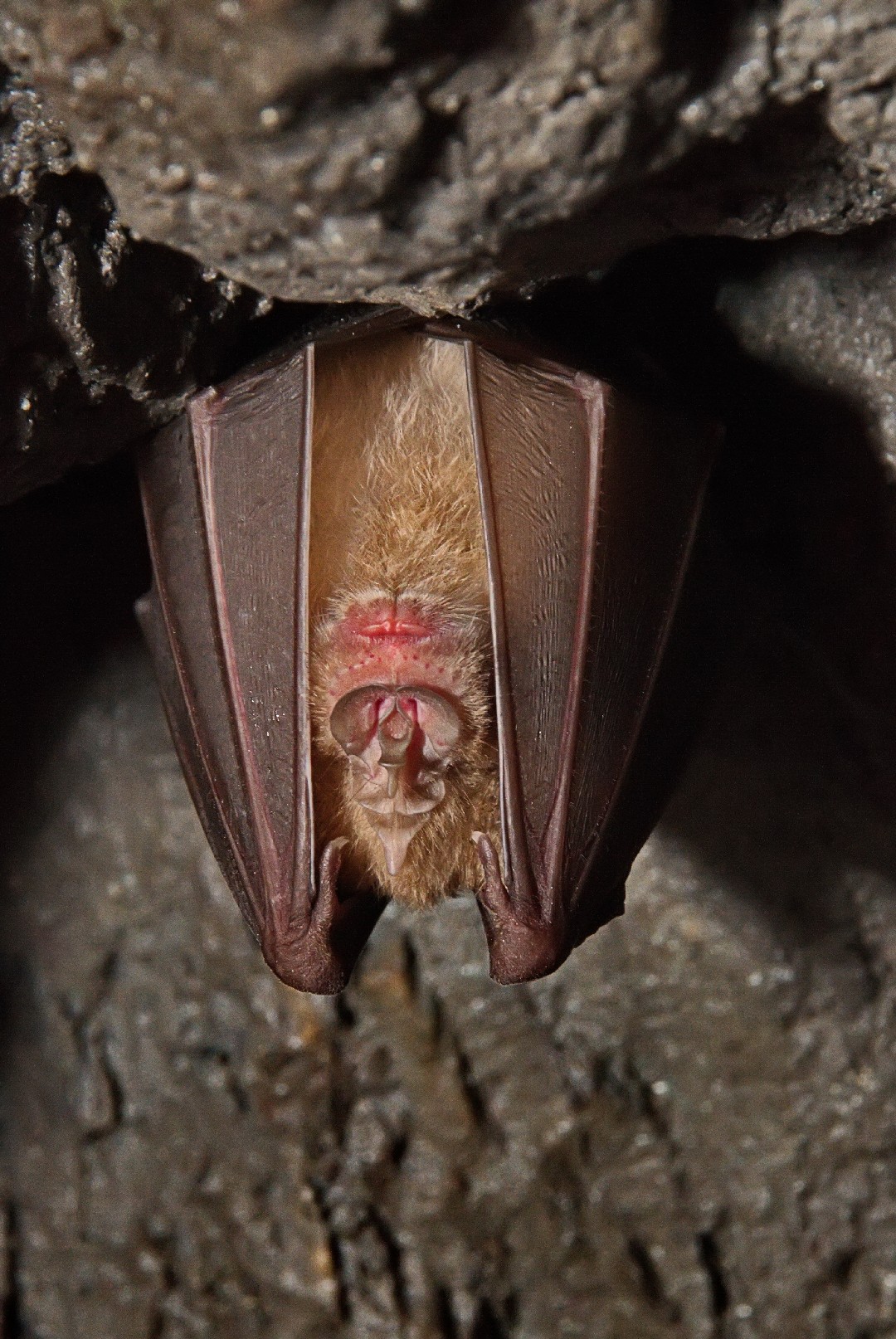Greater horseshoe bat
A species of Horseshoe bat Scientific name : Rhinolophus ferrumequinum Genus : Horseshoe bat
Greater horseshoe bat, A species of Horseshoe bat
Botanical name: Rhinolophus ferrumequinum
Genus: Horseshoe bat
Content
Description People often ask General Info
Description
The greater horseshoe bat is the largest horseshoe bat in Europe. It has a distinctive noseleaf, which has a pointed upper part and a horseshoe shaped lower part. Its horseshoe noseleaf helps to focus the ultrasound it uses to 'see'. The greater horseshoe bat also has tooth and bone structures that are distinct from that of other rhinolophids. Its first premolar on the upper jaw protrudes from the row of teeth. For other horseshoe bats, this premolar is very small or non-existent. Also in comparison to its relatives, the greater horseshoe bat has relatively short third and fourth metacarpal bones in its wings. It also lacks a tragus. The Greater Horseshoe Bat is, on average, between 57–71 millimetres (2.2–2.8 in) long, with a 35–43 mm tail (1.4–1.7 in) and a 350–400 mm wingspan (14–16 in); Rhinolophus ferrumequinum also exhibits slight sexual dimorphism, with females being a bit larger than males. The fur of the species is soft and fluffy, with the base of hairs being light grey, the dorsal side hair grey brown and the ventral side grey-white, with juvenile bats having more of an ash-grey tint to their fur. Wing membranes and ears are light grey-brown. The greater horseshoe bat weighs up to 30 grams (1.1 oz) and can live up to 30 years 
Size
6 - 7 cm
Life Expectancy
30-31 years
Nest Placement
Cavity
Feeding Habits
Greater horseshoe bat primarily consumes insects like noctuid moths, lesser wax moths, and beetles (including dung and cockchafers). It hunts using echolocation at night, capturing prey mid-flight with specialized dietary adaptations for insectivory.
Habitat
Pastures, deciduous temperate woodland, Mediterranean and sub-mediterranean shrubland and woodlands, warm underground sites, both natural and artificial, montane forests among the mountains, valleys of the Himalaya in South Asia, caves, old temples, old and ruined buildings in tight clusters 
Dite type
Insectivorous
People often ask
General Info
Feeding Habits
Bird food type
Behavior
Greater horseshoe bat is nocturnal and exhibits echolocation for precision in food location and navigation. These bats are colonial, living in large roosts, often found in caves, mines, or buildings. In summer, females create maternity colonies, separated from males. Unique to greater horseshoe bat is their hibernation behavior, solitary and inactive most of the winter, in caves or old mines. They feed on insects, displaying agile flight and hunting techniques.
Distribution Area
The greater horseshoe bat ranges from North Africa and southern Europe through south-west Asia, the Caucasus, Iran, Afghanistan, Pakistan and the Himalayas to south-eastern China, Korea, and Japan. The northernmost occurrence is in Wales. Reaches to the southern parts of the Netherlands, Germany, Poland and Ukraine. Generally the bats live below 800 m asl (above sea level), but it also lives, depending on roost availability and humidity, 3,000 m asl in the Caucasus. 
Species Status
In general the greater horseshoe bat is listed as Least Concern by the IUCN because: "This species has a large range. Although there have been marked and well-documented declines in some areas, the species remains widespread, abundant, and apparently stable in other areas. Assessed as Least Concern". However, the overall greater horseshoe bat population is declining. They are largely uncommon in much of their range. Despite this, they appear to be abundant and widespread in at least parts of south-west Asia and the Caucasus. Also in some northwest European countries, there appears to be some stabilisation and/or recovery. Less is known about bat trends in other parts of Europe. It is extinct in Malta. Fragmentation/isolation of habitats, change of management regime of deciduous forests and agricultural areas, loss of insects caused by pesticides, and disturbance and loss of underground habitats and attics are the major threats to the greater horseshoe bat. Deforestation, mostly caused by logging operations and the conversion of land for agricultural and other uses, threatens the species in South Asia. 
Scientific Classification
Phylum
Chordates Class
Mammals Order
Bats Family
Horseshoe bats Genus
Horseshoe bat Species
Greater horseshoe bat 